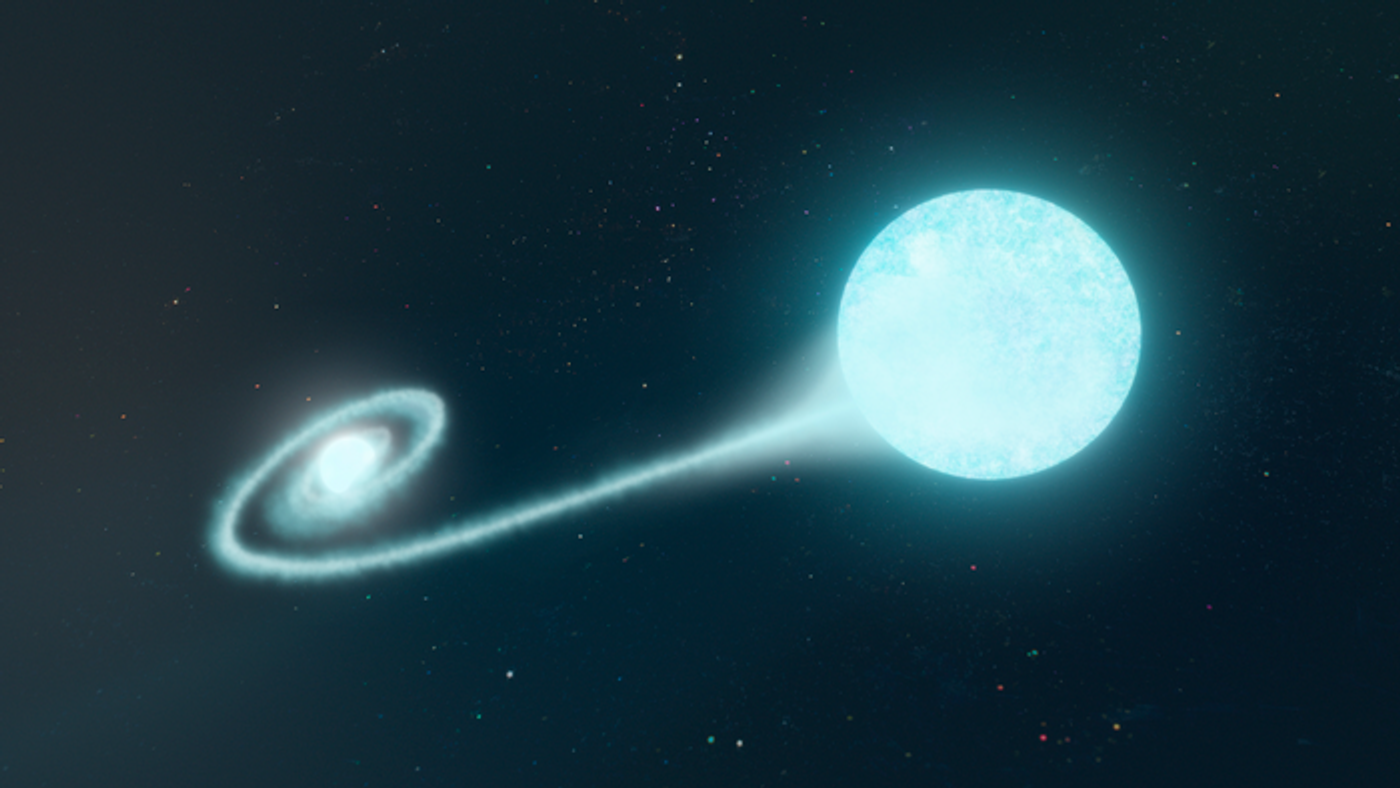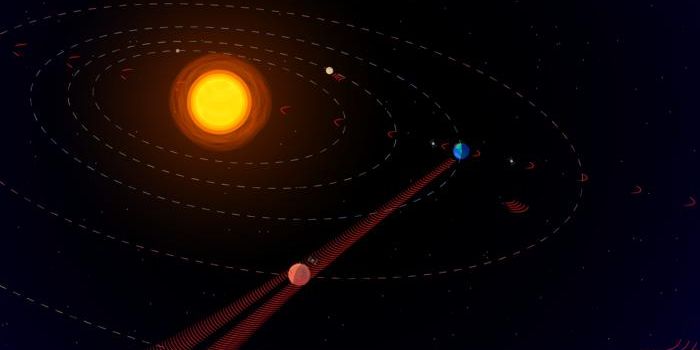Thermonuclear Supernova Explosion Origin Revealed by Radio Waves
How do supernovas occur? This is what a recent study published in Nature hopes to address as a team of researchers examine how recent radio wave emissions have not only helped astronomers identify the origin of a Type Ia supernova, dubbed SN 2020eyj, but also that its white dwarf companion which the exploding star was feeding from was rich in helium. This study holds the potential to help astronomers better understand the formation and evolution of Type Ia supernovae, as the processes behind their explosive nature remain a mystery.
Artist rendition of a white dwarf binary system where the left star is feeding off the right star until the left star explodes. (Credit: Adam Makarenko/W. M. Keck Observatory)
“Once we saw the signatures of strong interaction with the material from the companion, we tried to also detect it in radio emission”, said Dr. Erik Kool, who is a postdoc in the Department of Astronomy at Stockholm University, and lead author of the study. “The detection in radio is the first one of a Type Ia supernova – something astronomers have tried to do for decades.”
SN 2020eyj was first discovered in March 2020 by the Asteroid Terrestrial-impact Last Alert System (ATLAS) with follow-up observations carried out by the Zwicky Transient Facility camera which is attached to the Samuel Oschin Telescope located at the Palomar Observatory in southern California.
The only other published study regarding SN 2020eyj was recently published in the Monthly Notices of the Royal Astronomical Society where researchers argued that SN 2020eyj was the result of what’s known as the core-degenerate scenario. This means the supernova explosions happened when a carbon-oxygen white dwarf merges with stars that are members of the asymptotic giant branch, which are comprised of cooler stars whose less than eight masses of our own Sun.
The most recent study’s findings indicate the supernova explosion resulted from what’s known as a single-degenerate scenario, meaning the exploding star devoured most of the material from its binary companion prior to going supernova.
Study authors, Dr. Joel Johansson (left), Dr. Erik Kool (center), and Dr. Jesper Sollerman (right) from the Department of Astronomy at Stockholm University. (Credit: Magnus Näslund)
“This is clearly a very unusual Type Ia supernova, but still related to the ones we use to measure the expansion of the universe”, said Dr. Joel Johansson, who is a researcher in the Department of Physics at Stockholm University, and a co-author on the study.
What new discoveries will scientists make about Type Ia supernovae in the coming years and decades? Only time will tell, and this is why we science!
Sources: Nature, Stockholm University, Transient Name Server, arXiv
As always, keep doing science & keep looking up!










